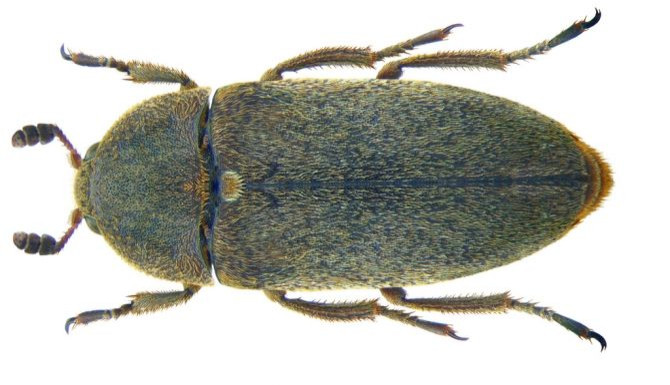Scent of Sex and Death Sends Virgin Female Beetles Flocking

The allure of sexual pheromones combined with the stench of rotting flesh makes the perfect cocktail for capturing the heart of even the fussiest of young virgin lady hide beetles, a new study revealed.
Scientists have already known that newly hatched male hide beetles (Dermestes maculatus) are attracted to benzyl butyrate, a chemical that is emitted in high concentrations by cadavers in late stage decay.
The decomposition of a vertebrate cadaver is a sequential buffet for many different carrion species, which have evolved feasting preferences for different stages during decomposition.
The first to arrive during the beginning of decomposition are blow flies and flesh flies, whose larvae feed on the still moist tissue, followed by clown and rove beetles, who eat the fly larvae and then adult hide beetles that feed on the remaining skin and ligaments, but will not breed until advanced decay has set in.
In fact, the life cycle and sequence of the arrival of these different carrion species is so predictable in the decaying process that it can be used by forensic scientists to estimate time of death
However, researchers have been unsure as to what attracts recently hatched, virgin females.
"Although cadaver odor alone is not sufficient to attract two to three week-old virgin female hide beetles, it is enough to attract newly emerged males," Christian von Hoermann at Ulm University, Germany said in a statement.
Forensic entomologist von Hoermann and his research team exposed virgin females to several potentially alluring scents, and found that neither the male sex pheromones nor the scent of a pig's cadaver at various stages of decay were significantly more attractive to the virgin females than the scent of a control pentane solution, an organic solvent which was used to extract the other odors.
Researchers said that the females basically ignored everything, but a combination of rotting pig scent and male pheromone quickly caught the females' attention and sent them flocking.
von Hoermann said that the behavior of female hide beetles makes sense because this behavior optimizes the chances of reproductive success by ensuring that there is both a waiting male and food for her larvae.
The study was published in Frontiers in Zoology.



























